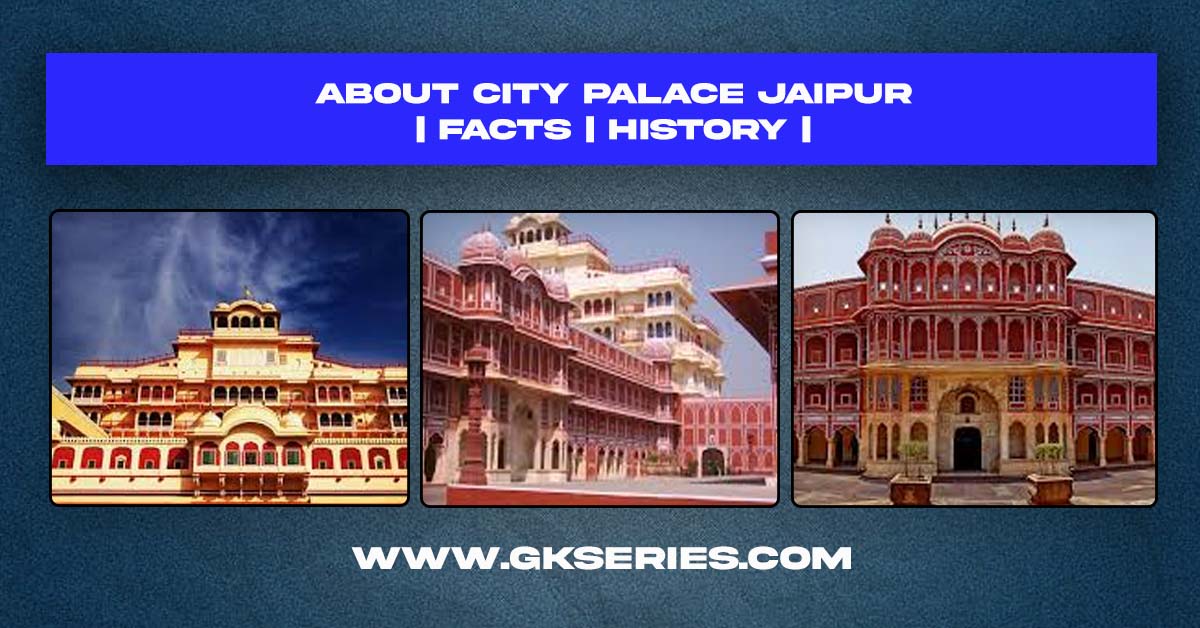
In this article, we provide comprehensive information about the geography, history, population, and top tourist destinations of Jaipur. The City Palace in Jaipur, Rajasthan, is a stunning architectural marvel and a symbol of the city’s royal heritage. Built in 1727 by Maharaja Sawai Jai Singh II, the founder of Jaipur, the palace is located in the heart of the Pink City and reflects a blend of Rajput, Mughal, and European architectural styles.
| About: | Located deep within the walled city, the City Palace Complex was conceived and built by Maharaja Sawai Jai Singh II, the founder of Jaipur. A beautiful fusion of Mughal and Rajput architecture, the palace is still home to the last ruling royal family which lives in a private section of the palace. Maharaja Sawai Jai Singh II is credited with building most of the structures, but it was expanded upon by later rulers as well. The complex includes the Mubarak Mahal, which was the reception palace, and the Maharani’s Palace, the queen’s residence. Currently, Mubarak Mahal houses the Maharaja Sawai Man Singh II Museum, featuring a vast and unique collection of royal costumes, delicate Pashmina shawls from Kashmir, Benaras silk saris, and garments with Sanganeri prints and folk embroidery. The clothing of Maharaja Sawai Madho Singh I is also part of the display. The Maharani’s Palace, on the other hand, showcases an impressive collection of well-preserved Rajput weaponry, with some pieces dating back to the 15th century. Additionally, the palace is adorned with stunning ceiling paintings that are remarkably well-maintained. |
| History: | The palace complex lies in the heart of Jaipur city, to the northeast of the very centre, located at 26.9255°N 75.8236°E. The site for the palace was located on the site of a royal hunting lodge on a plain land encircled by a rocky hill range, five miles south of Amber. The history of the city palace is closely linked with the history of Jaipur city And its rulers, starting with Maharaja Sawai Jai Singh II who ruled from 1699 to 1744. He is credited with initiating construction of the city complex by building the outer wall of the complex spreading over many acres. Initially, he ruled from his capital at Amber, which lies at a distance of 11 kilometres (6.8 mi) from Jaipur. He shifted his capital from Amber to Jaipur in 1727 because of an increase in population and increasing water shortage. He planned Jaipur city in six blocks separated by broad avenues, on the classical basis of principals of Vastushastra and another similar classical treatise under the architectural guidance of Vidyadar Bhattacharya, a Bengali architect from Naihati of present-day West Bengal who was initially an accounts-clerk in the Amber treasury and later promoted to the office of Chief Architect by the King. Following Jai Singh’s death in 1744, there were internecine wars among the Rajput kings of the region but cordial relations were maintained with the British Raj. Maharaja Ram Singh sided with the British in the Sepoy Mutiny or Uprising of 1857 and established himself with the Imperial rulers. It is to his credit that the city of Jaipur including all of its monuments (including the City Palace) are stucco painted ‘Pink’ and since then the city has been called the “Pink City”.The change in the colour scheme was as an honor of hospitality extended to the Prince of Wales (who later became King Edward VII) on his visit. This color scheme has since then become a trademark of the Jaipur city. Man Singh II, the adopted son of Maharaja Madho Singh II, was the last Maharaja of Jaipur to rule from the Chandra Mahal palace, in Jaipur. This palace, however, continued to be a residence of the royal family even after the Jaipur kingdom merged with the Indian Union in 1949 (after Indian independence in August 1947) along with other Rajput states of Jodhpur, Jaisalmer and Bikaner. Jaipur became the capital of the Indian state of Rajasthan and Man Singh II had the distinction of becoming the Rajapramukh (present-day Governor of the state) for a time and later was the Ambassador of India to Spain. |
| Country : | India |
| Location: | Jaipur, Rajasthan |
| Architect(s): | Vidyadar Bhattacharya |
| Construction started: | 1729 |
| Completed: | 1732; 292 years ago |
| Main contractor: | Jai Singh II |





